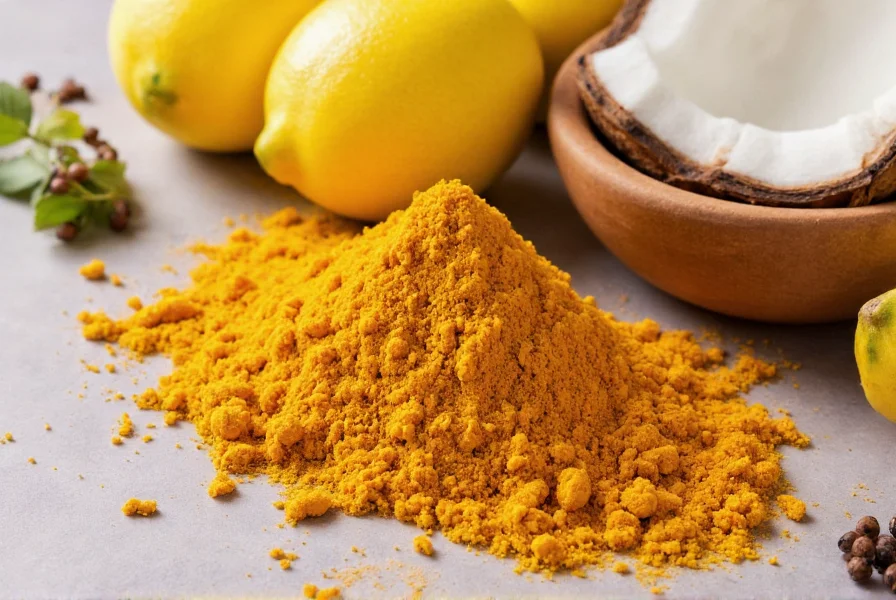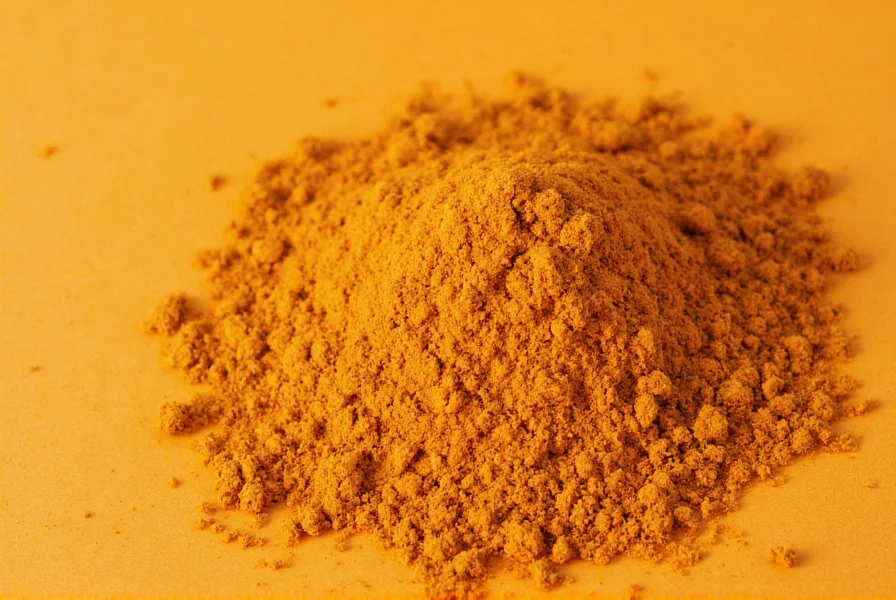Understanding turmeric's unique taste characteristics helps home cooks and professional chefs alike incorporate this vibrant spice effectively into their culinary creations. As one of the world's most popular spices with both culinary and traditional medicinal uses, knowing what turmeric tastes like is essential for anyone exploring global cuisines or seeking natural flavor enhancers.
The Complete Flavor Profile of Turmeric
Turmeric delivers a complex sensory experience that goes beyond simple description. When you taste turmeric, you'll notice several distinct elements that combine to create its signature profile:
| Flavor Component | Description | Intensity (1-5) |
|---|---|---|
| Earthy | Soil-like, grounding flavor reminiscent of fresh ginger | 4 |
| Bitter | Clean bitterness similar to dark chocolate or coffee | 3 |
| Citrus | Subtle orange or lemon notes, more pronounced in fresh form | 2 |
| Peppery | Mild heat without significant spiciness | 2 |
| Floral | Delicate floral notes, especially in fresh turmeric | 1 |
Fresh Turmeric vs. Powdered Turmeric: Taste Differences
Many people don't realize that fresh turmeric root tastes significantly different from its dried, powdered counterpart. Understanding these differences helps you choose the right form for your culinary needs:
- Fresh turmeric has a brighter, more complex flavor with pronounced citrus notes and a subtle floral quality. It's less bitter and more aromatic than the powder.
- Dried turmeric powder concentrates the earthy, bitter elements while mellowing the citrus components. The drying process creates a more uniform, intense earthiness that blends well with other spices.
When substituting one form for another in recipes, remember that one tablespoon of fresh grated turmeric roughly equals one teaspoon of turmeric powder in terms of flavor intensity.

How Turmeric's Taste Influences Culinary Applications
The distinctive taste profile of turmeric determines how it functions in various dishes. Unlike many spices that primarily add heat, turmeric contributes depth and complexity without overwhelming spiciness:
In Indian cuisine, turmeric's earthy bitterness balances the richness of coconut milk in curries and complements the heat from chilies. In Middle Eastern cooking, it enhances rice dishes without dominating other flavors. Western chefs increasingly use turmeric in salad dressings, roasted vegetables, and even baked goods where its subtle bitterness creates interesting flavor contrasts.
Professional chefs note that turmeric's bitterness can become unpleasant when used excessively. The ideal amount of turmeric for balanced flavor typically ranges from 1/4 to 1/2 teaspoon per serving in most dishes, though this varies based on the other ingredients present.
Common Misconceptions About Turmeric's Taste
Several myths persist about how turmeric actually tastes, often leading to improper usage:
- Misconception: Turmeric is extremely bitter and unpleasant
Reality: When used appropriately, turmeric's bitterness enhances rather than dominates, creating complex flavor layers. - Misconception: Turmeric tastes like curry powder
Reality: Curry powder contains turmeric but also multiple other spices; turmeric itself has a much more subtle, earthy profile. - Misconception: All turmeric tastes the same regardless of origin
Reality: Turmeric from different regions shows flavor variations, with Indian varieties typically more earthy and Southeast Asian types more floral.
Perfect Pairings: Ingredients That Complement Turmeric's Flavor
Certain ingredients naturally enhance turmeric's distinctive taste while balancing its more challenging elements. Understanding these flavor pairings for turmeric can transform your cooking:
- Fat sources: Coconut milk, ghee, or olive oil help mellow turmeric's bitterness while carrying its flavor throughout dishes
- Acidic components: Lemon juice or vinegar balances turmeric's earthiness with bright notes
- Sweet elements: Honey, maple syrup, or natural fruit sweetness counteracts bitterness
- Complementary spices: Cumin, coriander, and black pepper enhance turmeric's complexity without competing

Using Turmeric Effectively: Practical Tips
To maximize turmeric's flavor potential while avoiding common pitfalls, consider these evidence-based recommendations:
- Toast spices first: Briefly heating turmeric with other spices in oil releases more flavor compounds and reduces raw bitterness
- Balance bitterness: Combine with small amounts of sweet or acidic ingredients to create flavor harmony
- Consider timing: Add turmeric early in cooking for deeper flavor integration or later for brighter, more pronounced notes
- Pair with black pepper: Piperine in black pepper not only enhances absorption but also complements turmeric's earthy profile
Remember that how turmeric tastes in different dishes depends significantly on these preparation techniques. A well-balanced turmeric-infused dish shouldn't scream "turmeric" but rather offer subtle complexity that enhances the overall eating experience.
Conclusion: Embracing Turmeric's Unique Flavor
Turmeric's distinctive taste profile—earthy, slightly bitter, with subtle citrus notes—makes it a valuable addition to any kitchen. Understanding what turmeric actually tastes like helps you use this ancient spice more effectively, creating dishes with greater depth and complexity. Whether you're exploring traditional recipes or experimenting with modern fusion cuisine, turmeric offers a unique flavor dimension that, when properly balanced, can elevate your cooking to new levels.
Does turmeric taste bitter?
Yes, turmeric has a natural bitterness, but it's not overpowering when used in appropriate amounts. The bitterness is clean and earthy rather than harsh, and it balances well with fats, acids, and sweet elements in cooking. Fresh turmeric tends to be less bitter than the dried powder form.
How would you describe turmeric flavor to someone who's never tasted it?
Turmeric has a warm, earthy flavor with subtle citrus notes (particularly orange), a mild peppery quality, and a clean bitterness similar to dark chocolate. It's less spicy than ginger but shares some earthy qualities, with a distinctive golden hue that influences both appearance and flavor perception.
Why does turmeric taste different in curry compared to golden milk?
The taste difference comes from preparation methods and complementary ingredients. In curry, turmeric is typically cooked with other spices and acidic ingredients which mellow its bitterness and integrate its flavor. In golden milk, turmeric is often added to warm milk with sweeteners and other spices, creating a smoother, less intense flavor profile where the earthiness is balanced by sweetness and fat from the milk.
Does the taste of turmeric change when heated?
Yes, heating turmeric significantly changes its flavor profile. When cooked, especially in oil, turmeric's volatile compounds transform, reducing its raw bitterness and developing deeper, more complex earthy notes. This is why recipes often call for toasting turmeric with other spices before adding liquids—it creates a more integrated, mellow flavor compared to adding it to finished dishes.
How much turmeric is too much before the taste becomes unpleasant?
For most people, exceeding 1/2 teaspoon of turmeric powder per serving in savory dishes begins to create an overwhelming earthy bitterness that many find unpleasant. The threshold varies based on individual taste sensitivity and the other ingredients in the dish. When using fresh turmeric, the threshold is higher—typically around 1-2 teaspoons grated root per serving—because fresh turmeric has a milder, more floral profile.











 浙公网安备
33010002000092号
浙公网安备
33010002000092号 浙B2-20120091-4
浙B2-20120091-4